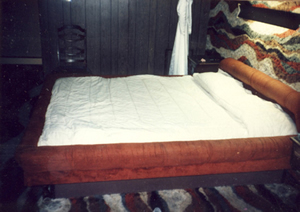
The Found Photograph and the Limits of Meaning
Barry Mauer
continued . . .
![]()
|
|
|
Found photographs are media artifacts of a peculiar kind because they were never meant to be viewed and interpreted by total strangers. Because the original contexts that anchored their meaning have been severed from them, found photographs foster a new and valuable "reading" disposition, one that sharpens our inferential skills and reflects upon our ordinary habits of perception. The best conclusions we can draw from found photographs are conclusions about ourselves; when we interpret and react to found photographs, we reveal our own perceptual processes.
|
Because in most cases it is hard to establish the original context for the photographs (a sense of their history, the intentions of the photographer, knowledge of the people in the photographs), they are a bit like Rorschach tests-they elicit our desires and judgments. They can also change the way we see ourselves. |
1 | 2 | 3 | 4 | Next Node | 6 | 7 | 8 | 9 | 10 | 11 | 12 | Works Cited
|
Copyright © Enculturation 2001 |
 The family photograph occupies a curious place within the logic of family life. Marianne Hirsch, in Family Frames: Photography, Narrative, and Postmemory, argues that "[family] photographs locate themselves precisely in the space of contradiction between the myth of the ideal family and the lived reality of family life" (8). My experience with found photographs, however, suggests that some poorer people (who tend to lose more photographs than wealthier people)
are less able or less willing to project a myth of ideal family life. Their photographs often reflect the reality side of the spectrum(making them more interesting to strangers like me). Many do not depict common "family" themes-one shows a new waterbed against a brightly-colored shag-carpet wall; one shows a couple dancing in a neighborhood bar; one shows a scantily-clad woman leaning over a car hood.
The family photograph occupies a curious place within the logic of family life. Marianne Hirsch, in Family Frames: Photography, Narrative, and Postmemory, argues that "[family] photographs locate themselves precisely in the space of contradiction between the myth of the ideal family and the lived reality of family life" (8). My experience with found photographs, however, suggests that some poorer people (who tend to lose more photographs than wealthier people)
are less able or less willing to project a myth of ideal family life. Their photographs often reflect the reality side of the spectrum(making them more interesting to strangers like me). Many do not depict common "family" themes-one shows a new waterbed against a brightly-colored shag-carpet wall; one shows a couple dancing in a neighborhood bar; one shows a scantily-clad woman leaning over a car hood.

